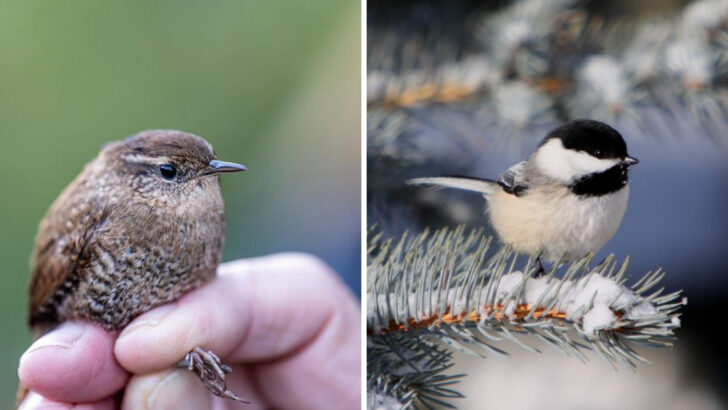They’re smaller than your thumb—
but packed with enough attitude to rival a hawk.
These pint-sized powerhouses zip through the air like feathery bullets, flaunting colors that would make a rainbow jealous.
You’ll barely catch a blur before they’re gone.
They perch on twigs thinner than spaghetti.
They weigh less than a pencil.
And yet—they thrive in forests, deserts, cities, and backyards like they own the place.
If you’ve ever been mesmerized by a hummingbird or stared in disbelief at a sparrow-sized fluffball, this one’s for you.
Get ready to meet 15 of the tiniest, boldest, most jaw-droppingly adorable birds you’ll ever spot in America.
Ruby-throated Hummingbird
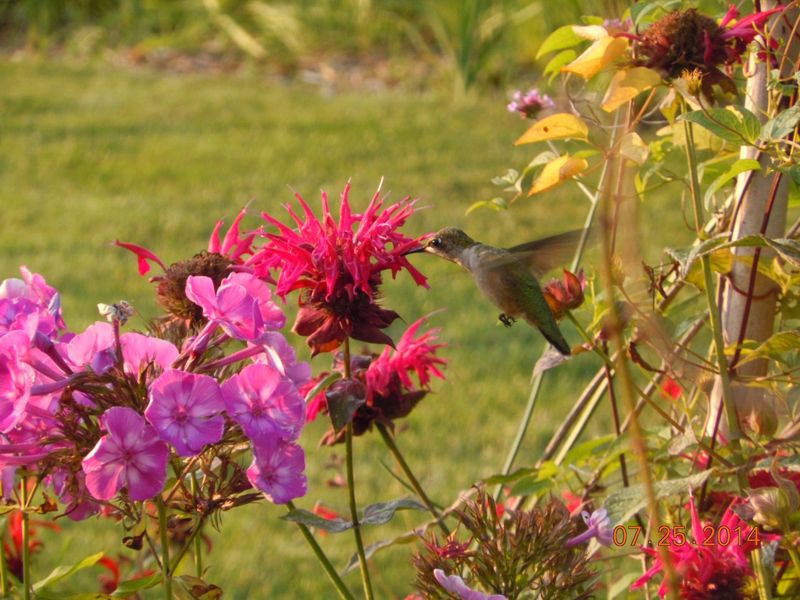
The Ruby-throated Hummingbird, measuring just 3 inches, is a dazzling spectacle. Its radiant green plumage glistens in the sunlight, while the male’s ruby-red throat catches the eye.
Known for their acrobatic flight, these hummingbirds can hover with incredible precision, making them a favorite among bird watchers. Their wings beat so fast they create a mesmerizing hum, adding to their enchanting presence.
These tiny birds embark on a remarkable journey, migrating up to 2,000 miles from Central America to North America, crossing the Gulf of Mexico in a single flight.
Costa’s Hummingbird
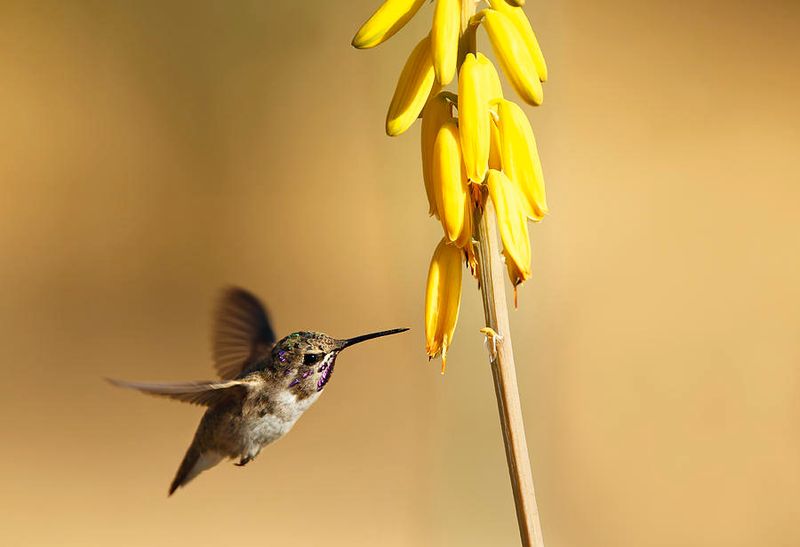
Costa’s Hummingbird is a true desert jewel, with its brilliant purple crown and throat that shimmer in the sun. At just about 3.5 inches, it’s a tiny powerhouse of energy.
This bird thrives in arid environments, nesting on cactus and flowering shrubs. Its unique whistling song can be heard echoing through the canyons, a delightful serenade for those exploring the desert.
These birds are highly territorial, often seen chasing away rivals with fearless vigor. Despite their size, Costa’s Hummingbirds are bold and full of personality.
Calliope Hummingbird

As the smallest bird in North America, the Calliope Hummingbird is nothing short of extraordinary. Weighing less than a penny, this tiny marvel sports a striking magenta-striped throat.
Known for its long migrations, it travels from the Pacific Northwest to Central America, displaying remarkable endurance. In flight, the Calliope’s wings create a high-pitched trill, a distinctive signature.
Its preferred habitats include mountain meadows and alpine gardens, where it feeds on nectar from vibrant wildflowers. Watching a Calliope in action is a moment of pure magic.
Verdin
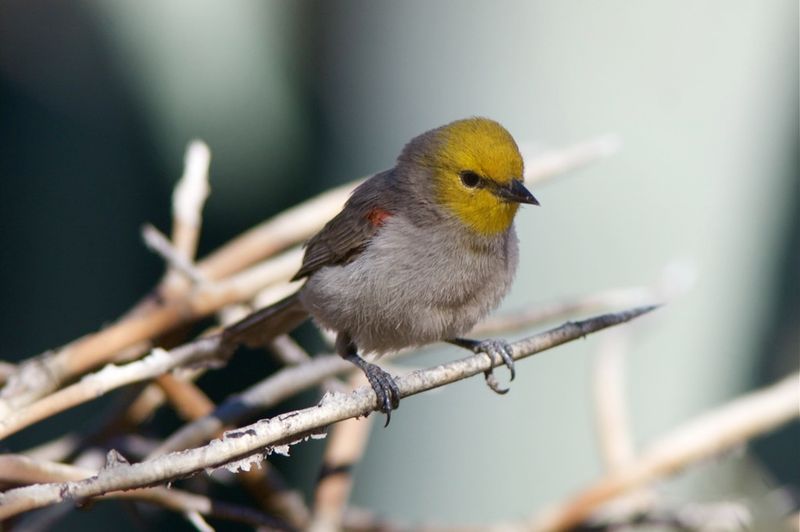
The Verdin may be small, but it is a master of adaptation, thriving in the harsh desert climates of the southwestern United States. This petite bird, just 4 inches long, is easily recognized by its bright yellow head.
Verdins are highly resourceful, building multiple nests that serve as shelters from the extreme temperatures. Their diet consists mainly of insects and spiders, supplemented by nectar and fruit.
Despite its small stature, the Verdin’s cheerfully energetic nature makes it a delightful sight in the sparse desert terrain. Its soft chirping is a gentle companion to the arid landscape.
Golden-crowned Kinglet
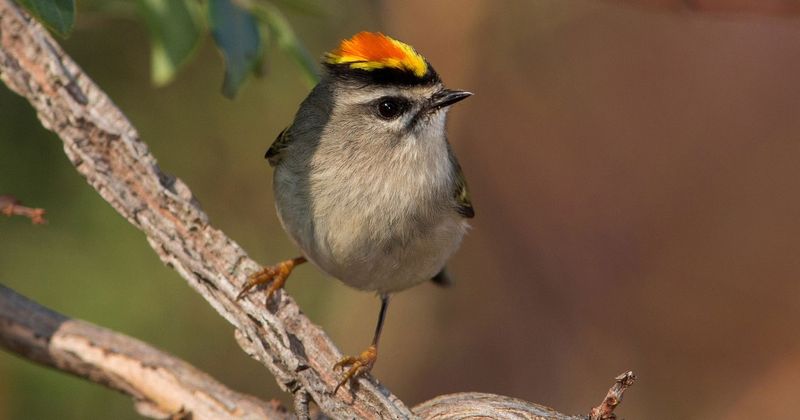
The Golden-crowned Kinglet is a tiny woodland sprite, measuring just 4 inches. Its vibrant golden-yellow crown is a flash of color amidst the forest green.
Renowned for its ability to endure harsh winters, this little bird thrives in coniferous forests, flitting energetically among branches in search of insects. Its high-pitched calls are a staple sound in these woods.
Despite its delicate appearance, the Golden-crowned Kinglet is incredibly hardy, often seen foraging in subzero temperatures. It’s an inspiring example of resilience and vitality in the avian world.
Bushtit
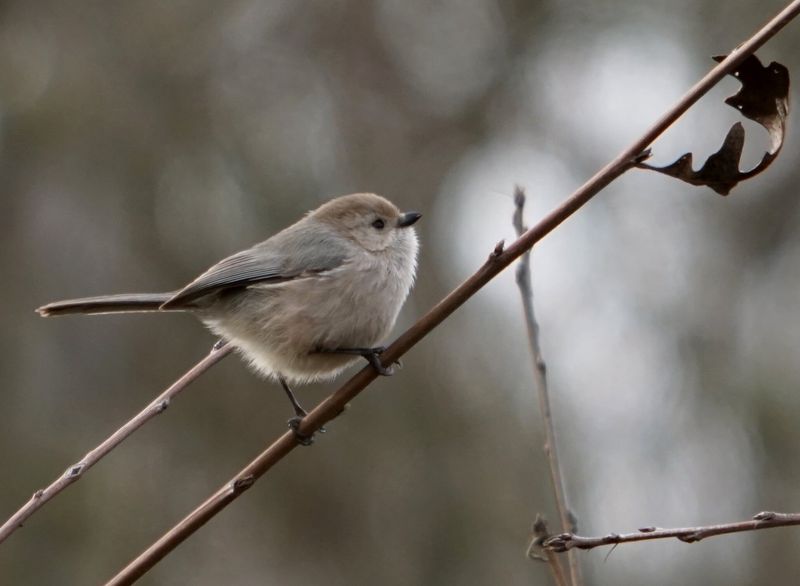
The Bushtit is a social butterfly of the bird world, often seen in lively flocks. At about 4.5 inches, these tiny birds are known for their soft grey feathers and charmingly inquisitive eyes.
Common in suburban parks and gardens, Bushtits are constantly on the move, busily hunting for insects and spiders. Their cheerful, continuous chatter fills the air, adding life to any green space.
During cooler months, these birds are often found huddled together for warmth, a heartwarming sight that highlights their communal nature. Spotting a flock is always a joyous experience.
Black-capped Chickadee
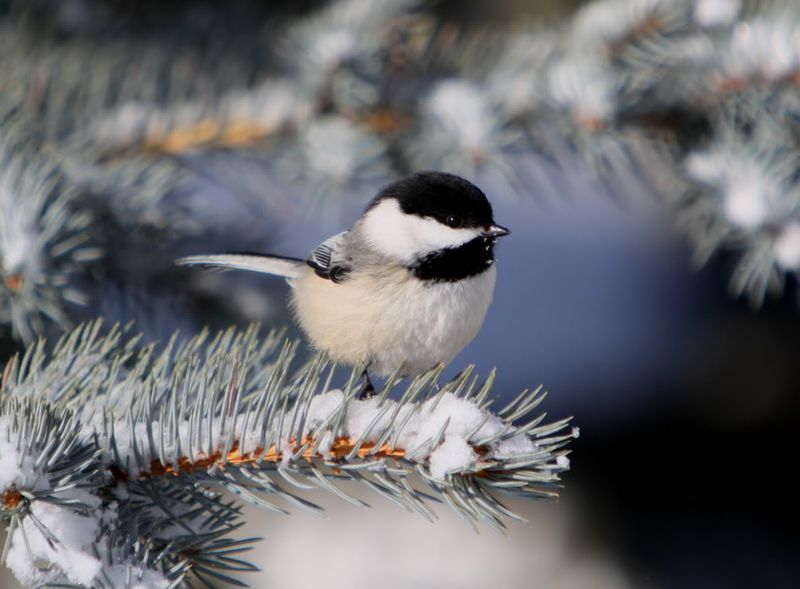
The Black-capped Chickadee, with its distinctive black cap and bib, is a beloved backyard visitor. Measuring about 5 inches, this bird is small but full of character.
Known for its curiosity and friendliness, the chickadee often approaches feeders with a boldness that belies its size. Its clear, musical “chick-a-dee-dee-dee” call is a familiar sound in many gardens.
Adaptable and intelligent, Black-capped Chickadees store food for winter and can lower their body temperature to survive cold nights. These adorable birds are a joyous presence in any snowy landscape.
American Goldfinch

The American Goldfinch, often called the “wild canary,” is a burst of sunshine in the bird world. With its vivid yellow feathers, it’s hard to miss.
These small birds, about 5 inches long, are frequent visitors to gardens, especially those with sunflowers and thistles. Their sweet, twittering song adds a touch of melody to the summer air.
In winter, goldfinches undergo a dramatic transformation, molting into a drab brown plumage. This seasonal change makes their vibrant return in spring all the more delightful, a true herald of warmer days.
Blue-gray Gnatcatcher

With its sleek blue-gray plumage and long tail, the Blue-gray Gnatcatcher is a nimble insect hunter. At just 4.5 inches, this tiny bird is full of energy and agility.
Often seen flitting through treetops, it uses its tail to flush insects into flight, a clever hunting strategy. Its soft, wheezy calls are a common sound in deciduous forests during the warmer months.
The gnatcatcher’s constant movement and impressive aerial acrobatics make it a captivating sight for bird watchers. Its presence adds a dynamic touch to any woodland scene.
Brown-headed Nuthatch
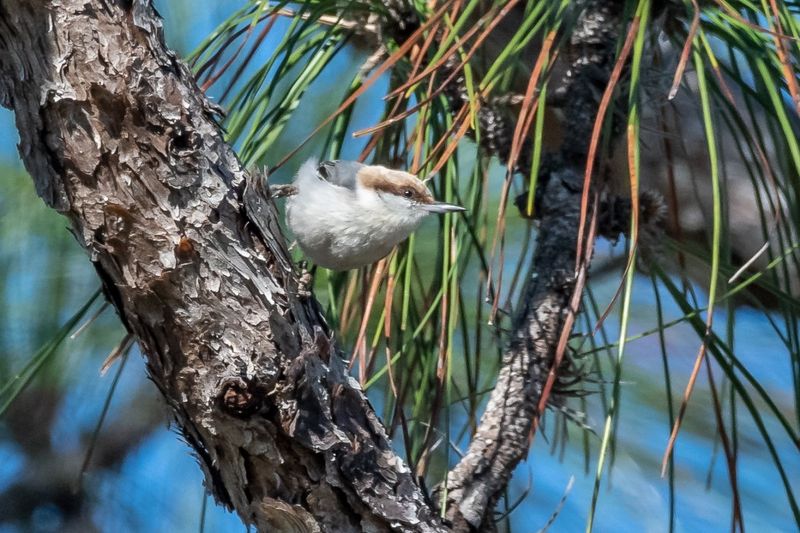
The Brown-headed Nuthatch is a pint-sized marvel, known for its distinctive squeaky calls that resemble a rubber duck. At about 4 inches, it’s a small bird with a big personality.
These birds are adept climbers, often seen scaling tree trunks headfirst in search of insects. They are clever tool users, sometimes using bark pieces to pry up tree bark and uncover hidden insects.
Found in pine forests of the southeastern United States, the Brown-headed Nuthatch’s playful antics and social nature make it a delightful companion for any forest walk.
Pygmy Nuthatch
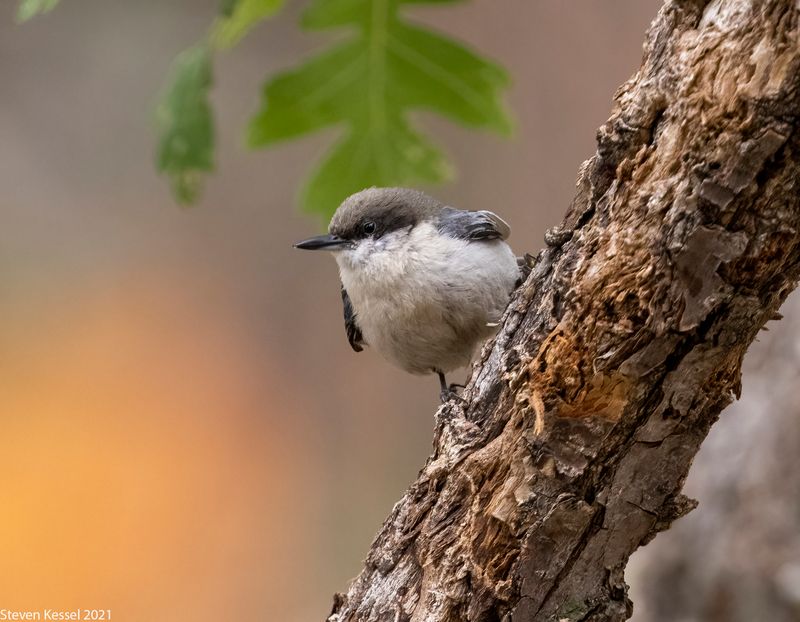
The Pygmy Nuthatch is a tiny dynamo, found in the towering pine forests of the western United States. At just 4 inches, its small stature belies its lively spirit.
These gregarious birds are often seen in flocks, chattering noisily as they forage for insects among the pine needles. Their acrobatic antics are a joyful spectacle.
In winter, they huddle together for warmth, showcasing their strong social bonds. The Pygmy Nuthatch’s cheerful presence and unique behaviors make it a favorite among bird watchers and nature lovers alike.
Purple Finch
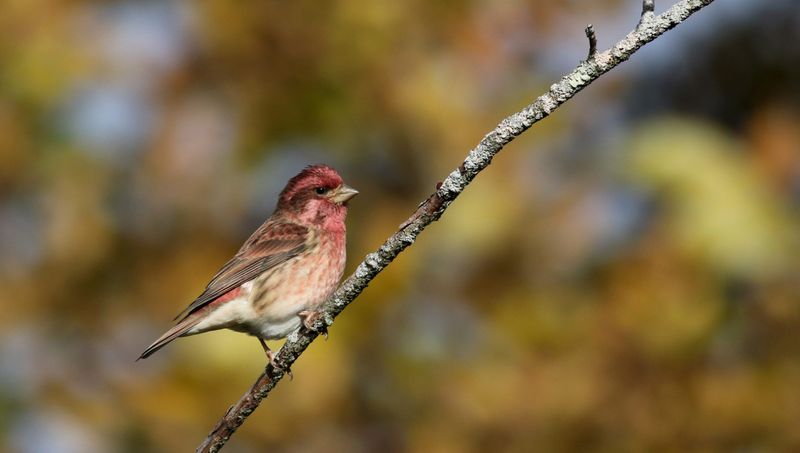
Despite its name, the Purple Finch dazzles with its rosy-red plumage, making it a striking sight in any garden. At about 6 inches, it’s a bit larger than some on our list but still delightfully small.
These finches are fond of seeds and are often seen at feeders, their melodious song adding a sweet tune to the spring air. Their color and song make them a joy to observe.
Often confused with the House Finch, the Purple Finch’s more robust bill and brighter color help differentiate it. Their vibrant presence is a welcome splash of color in any setting.
Carolina Wren
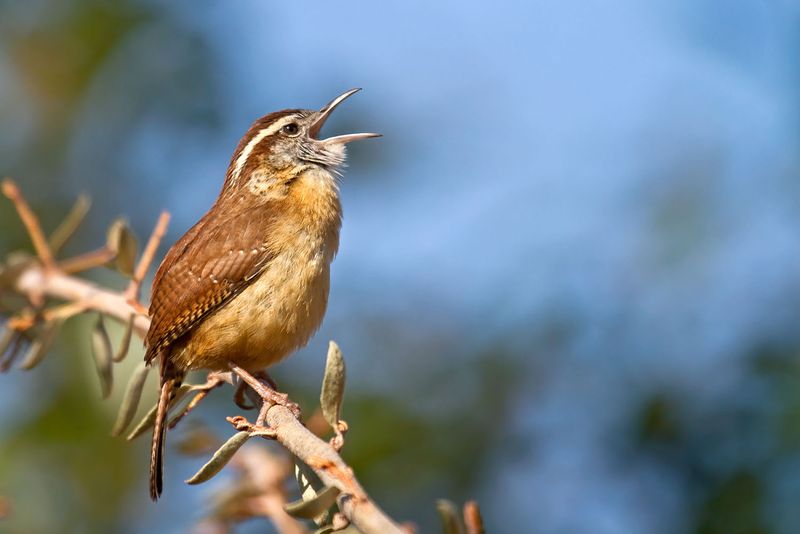
The Carolina Wren, at around 5.5 inches, is a small bird with a powerful voice. Its loud, melodious song is often heard echoing through gardens and forests.
With its rusty brown feathers and striking white eyebrow stripe, this wren is a charming sight. Known for their curiosity, Carolina Wrens often explore nooks and crannies around homes and gardens.
These birds are adaptable, thriving in various environments from urban areas to deep forests. Their presence brings a lively energy and a beautiful soundtrack to any outdoor space.
House Wren
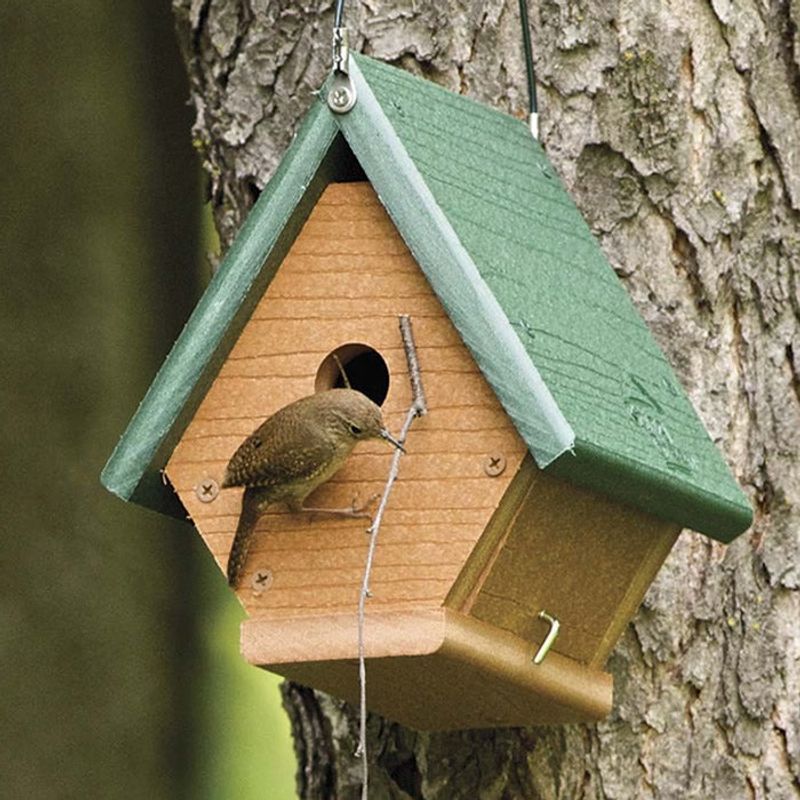
The House Wren, though plain in appearance, is a charismatic little bird with a bubbly personality. At about 4.5 inches, it brings charm to any garden.
Famous for its loud and complex song, the House Wren is a vocal powerhouse. It often nests in birdhouses or any available cavity, making it a familiar presence in many backyards.
Its energy and inquisitive nature make the House Wren a delightful neighbor. Despite its plain looks, its lively song and active demeanor ensure it never goes unnoticed.
Winter Wren
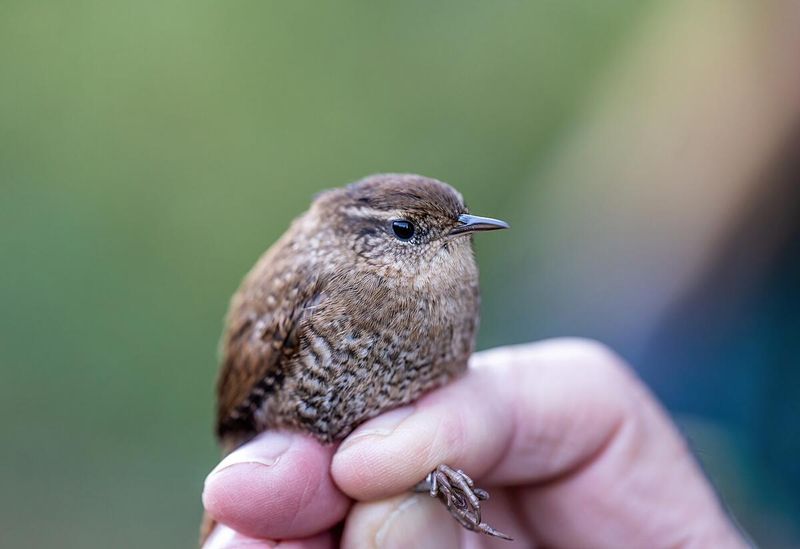
The Winter Wren is a small bird with a mighty voice, known for its complex and beautiful song. At just 4 inches, this tiny bird delivers a vocal performance that enchants any listener.
Preferring dense underbrush and forest floors, the Winter Wren is a master at weaving through tangled vegetation. Its rich, chocolate-brown plumage provides excellent camouflage.
Despite its elusive nature, spotting a Winter Wren is a rewarding experience. Its song, a cascade of notes, resonates with the richness of the forest, making it a true auditory delight.

